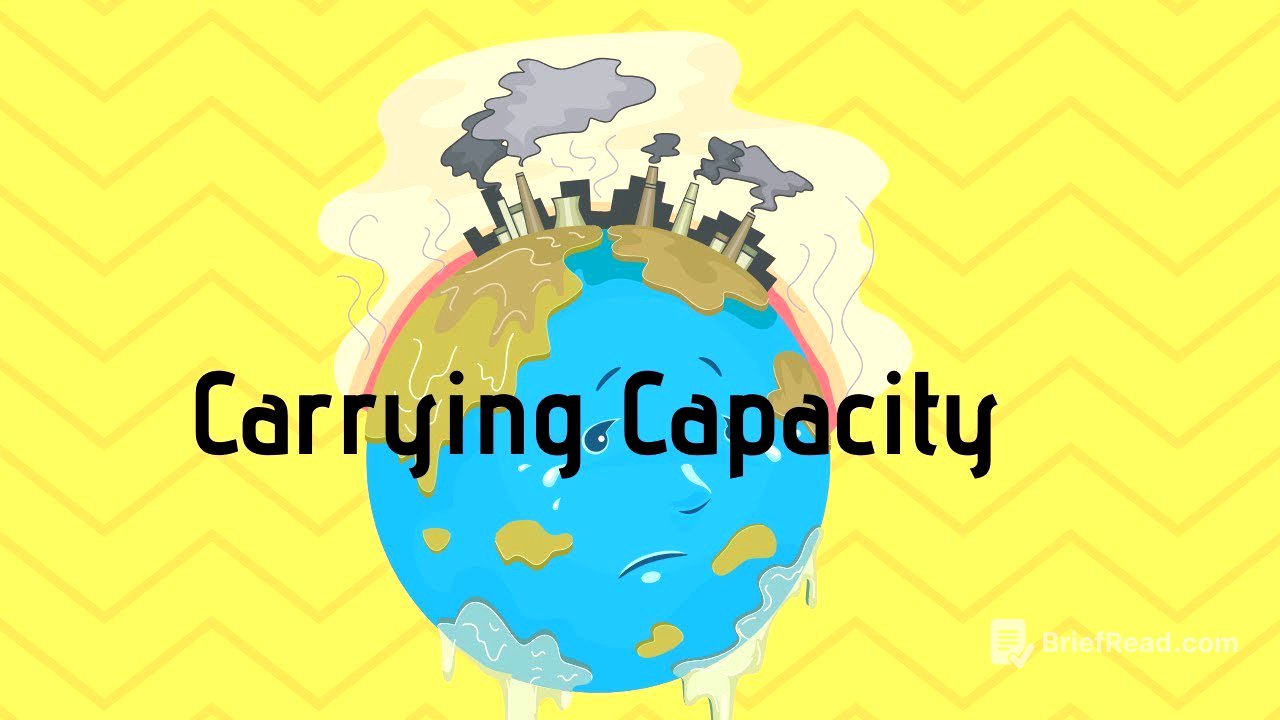TLDR;
This video explains the concept of carrying capacity in an ecosystem, which is the maximum number of individuals of a species that an environment can sustainably support. It highlights limiting factors like food, water, shelter, space, disease, predation, and climate, and uses examples such as a fishbowl and a black bear habitat to illustrate how these factors affect population size. The video also touches on the consequences of exceeding carrying capacity, such as increased death rates and emigration.
- Carrying capacity is the maximum population size an environment can sustain.
- Limiting factors determine carrying capacity.
- Exceeding carrying capacity leads to population decline.
Introduction to Carrying Capacity [0:00]
The video starts by referencing the Irish potato famine in the 1800s, where a water mould caused potato blight, devastating the potato crop. This led to mass starvation and emigration, significantly reducing Ireland's population. This historical event serves as an example of how a lack of food, a limiting factor, can dramatically impact an ecosystem's or habitat's carrying capacity.
Defining Carrying Capacity [0:26]
Carrying capacity is defined as the maximum number of individuals of a species that an environment can support long term. This capacity is limited by various factors, including the availability of food, water, and shelter, as well as adequate space. Disease, predation, and climatic conditions also play a significant role in limiting population size. When a population nears its carrying capacity, resources become scarce, and if it exceeds this capacity, the death rate begins to surpass the birth rate.
Fishbowl Example [1:01]
The video uses the example of a fish family in a fishbowl to illustrate carrying capacity. Initially, the fish have plenty of space, food, and sunlight, allowing them to reproduce rapidly. However, as the population grows, resources become limited, particularly space and food. Eventually, the fish population reaches a point where some begin to die off due to insufficient food and limited space, demonstrating that the carrying capacity of the fishbowl has been reached.
Population Growth Curve [1:31]
As a population approaches its carrying capacity, the rate of increase typically slows down, and the birth rate eventually equals the death rate. The growth curve plotted for this type of population growth is s-shaped, showing a period of increasing growth rate followed by a levelling off as the population nears its carrying capacity.
Black Bear Habitat Example [1:52]
The carrying capacity of a black bear habitat is influenced by factors such as shelter, food supply, and social tolerances within the species. Shelter is crucial for feeding, hiding, bedding, travelling, and raising cubs. Limited space can lead to adult bears killing or driving out younger bears, forcing them to search for unoccupied areas. Reduced food supplies due to competition can cause bears to move to less frequented areas or even travel long distances in search of sustenance, potentially leading to poor health and forcing young bears out of the area by more aggressive adults.
Summary of Carrying Capacity [2:54]
Populations cannot grow exponentially indefinitely. Exploding populations will always reach a size limit imposed by limiting factors such as water, space, or food, or by adverse conditions like disease, drought, and extreme temperatures.









